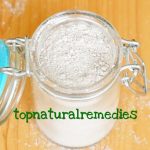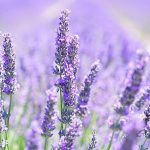Snowdrop – A Remedy for Alzheimer’s Disease and Other Cognitive Disorders
Snowdrops are celebrated everywhere as a sign of spring. They are the first to announce nature’s revival, through their most pleasant beauty and delicacy. But snowdrops should not be praised only for their subtle fragrance and pure looks, but also for their medicinal properties, among which the brain health related ones are certainly the most amazing. According to certain scientific studies, it seems that snowdrops can also be a sign of spring for those that have seen quite many springs, having been proven to reverse some of the symptoms of Alzheimer’s disease and other cognitive disorders.

Contents
Scientific studies
The neurologic properties of snowdrop are due to the presence in its bulb of an alkaloid named galanthamine, an inhibitor of acetylcholinesterase. This inhibiting activity increases the concentration of acetylcholine in certain parts of the brain, with therapeutic effects on some of the symptoms of Alzheimers’s disease or autism spectrum disorders. Galanthamine is also been said to help people fall asleep and to improve the quality of sleep.
In a study published in Journal of Neural Transmission in 2014 concluded that “galanthamine could significantly improve cognitive, behavioral, and global performances in patients with Alzheimer’s Disease.”
In a study published in Alzheimer’s Research and Therapy in 2014 showed that “patients with MCI who were treated with galanthamine demonstrated a lower rate of whole brain atrophy […] compared to those treated with placebo.”
A study evaluating galanthamine and risperidone effects on agitation in people with dementia, published in Dementia and Geriatric Cognitive Disorders in 2014, concluded that “agitation improved in both groups, even if the treatment effects were more pronounced in the risperidone group; however, the effects on cognition and other aspects of tolerability were stronger with galantamine.”
And a study published in International Journal of Developmental Neuroscience in 2014 showed that galanthamine can reduce the brain damage induced by hypoxia-ischemia in newborn rats.
Other uses
- Neural lesions
- Neuralgia, neuritis
- Late menstruation
- HIV infection (In an article published in Molecules in 2015, lectins from snowdrop are included among the ones with anti-HIV activity.)
- Myasthenia, muscle cramps
- Rheumatic pain
- Varicose veins
- Vaginal candidiasis
- Skin spots, freckles
Preparation and administration
- For neural disorders, late menstruation and HIV infection: add 1 teaspoon of finely cut dried bulbs in 500 ml of water and let steep for 5 minutes. Drink 2-3 cups a day.
- For muscle problems, rheumatic pain and varicose veins: add 1 tablespoon of dried herb (leaves, stems and flowers) in a cup of hot boiled water and let steep for 5 minutes. Drink 2-3 cups a day.
- For external use: add 30 g of dried herb in 1.5 l of water and boil for 15 minutes.



